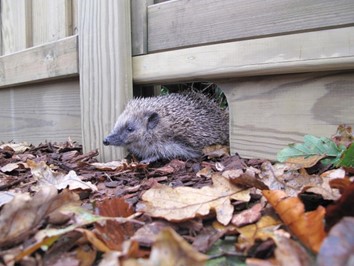Did you know, according to a recent study which was published by London’s Natural History Museum – Britain has lost more of its natural biodiversity than any other country in Western Europe. This is largely due to our country’s landscape and how it was transformed during the industrial revolution. As a result, we have lost almost half of our biodiversity. This is extremely worrying and unacceptable, and we must make changes.
At times it may feel very overwhelming to hear these scary figures and it is not uncommon to feel powerless in reversing these effects. However, it is important that everybody do what they can, no matter how small, to help increase biodiversity and restore nature. Fortunately, there are many options for doing your bit for nature, that don’t require a lot of work or effort and can be great fun. Examples include installing a bird box, planting wildflowers, creating bug hotels and much more.
Caledonian Horticulture is regularly posting ways in which you can help boost biodiversity. Today we are discussing how you can support your local hedgehogs with 5 top tips.
How can you support local hedgehogs?
Hedgehogs are vulnerable to extinction in the UK. Their numbers have been estimated to be at less than 500,00, compared to 1995 when there were around 1.5 million. Their decline is likely caused by loss and damage to their natural habitats from developments, agriculture intensification, and climate change.
These changes in the environment are forcing hedgehogs to become more reliant on urban and suburban gardens as places to shelter and find food.
This means that how you manage your garden can be vital to local hedgehogs. You can help hedgehogs by providing shelters, creating safe corridors for them to move around the landscape, and providing food resources.
Five top tips for creating a hedgehog haven in your garden:
- Let areas of your garden grow wild to mimic hedgehogs’ natural habitat
Letting areas of your garden grow wild is beneficial to a wealth of species. For hedgehogs, it can provide lots of food resources. Native and nectar-rich wildflowers will attract slugs and a variety of bugs which are a hedgehog’s best food source. Allowing long grass and bushes to grow also provides shelter and hiding places for hedgehogs. Before using a lawnmower or strimmer in long grass, please always check first for any sleeping hedgehogs! - Provide shelter through logs piles and pre-made hedgehog homes
Hedgehogs need a place to hibernate during the winter but also to rest during the day for the rest of the year. Hedgehog shelters can be purchased online, but it is just as good to create a natural resting area if you can.
An untouched pile of logs, wild and overgrown areas of vegetation and piles of leaves are all great habitats for hedgehogs to rest and create their nests. If you do purchase or create a hedgehog house, make sure it is tucked into and covered with leaves or logs so not easily accessible to predators. - Do not use pesticides and poisons
Please do not use pesticides and poisons such as slug poison in your garden as hedgehogs regularly feed on slugs. There are safer alternatives to using chemicals which will deter slugs from your plants without harming them and without harming other wildlife. For example, sprinkling crushed eggshells around plants have proven to be effective as slugs are unable to ‘walk’ over them. Other deterrents include coffee grounds and copper tape. - Leave out water and appropriate food resources
Hedgehogs naturally eat insects and other invertebrates, however many of these are in decline due to agricultural intensification and the use of pesticides. Some good things to leave out for hedgehogs to eat are meat-based cat or dog food (although this may attract rodents) and cat biscuits.
A shallow dish of water that you make sure is always filled will greatly benefit hedgehogs as well as other wildlife.
You can leave out food any time, but it will be most beneficial from later summer through autumn whilst they are building up their fat reserves for winter. Dry and hot weather is also a good time to provide food. - Consider adding a ‘hedgehog highway’ in fences or walls to allow hedgehogs to move between gardens
On average, hedgehogs will travel around one mile every night to find food and their mate, and this often involves passing through our gardens and parks. One of the main reasons that hedgehog numbers are in decline is due to Britain’s landscape and urban areas becoming more divided by fences and walls, reducing the land available to hedgehogs. Making hedgehog size holes in garden fences and walls for them to pass through will make their life much easier. A 13×13 cm sized hole is sufficient for hedgehogs.
You can sign a petition to make sure all new builds in the UK leave suitable access for hedgehogs here https://chng.it/Fnx2bWykGj


